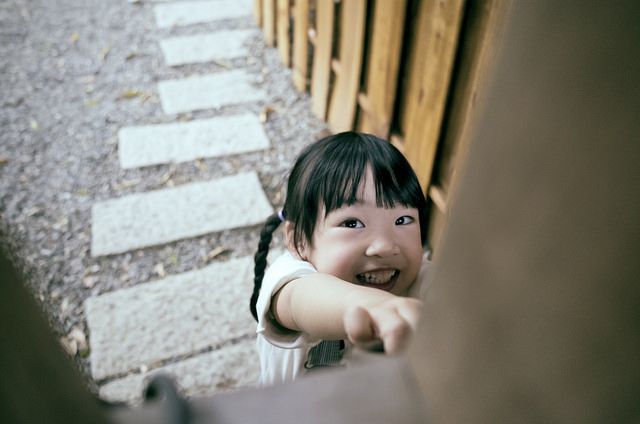Bearings
Called to Dinner, Together
By Heidi Shott
January 2017 Issue

Growing up, I didn’t realize that my proximity to extended family would, 40 years later, turn out to be an anachronism.
With my much older sister and three of my father’s six siblings living within a few hundred yards of our family farm, I came and went as I pleased. My mother, an unenthusiastic cook, was happy for me to make the rounds to see who offered the best options for dinner. I didn’t knock. I didn’t ask. I just barged in and took my rightful place at the table.
Years later I married an affectionate man who hailed from a kind and generous, if formal, Southern family. It was a surprise to discover the complex distinctions they made between the nuclear family and the extended family; I had grown up thinking they were synonymous.
Learning new rules was hard, especially after our own children were born and my in-laws’ involvement did not match that of my own parents’. I was a slow learner, but after 25 years or so, I managed to adapt. Then, last June, when three-quarters of our nuclear family made a long-overdue visit to the island in Southeast Alaska where my brother and nephew and their families have lived for many years, I once again was jolted into reshuffling the deck of my familial definitions.
My brother Jim, a mate with the Alaska Marine Highway System, is ten years my elder. He had kids young, divorced, moved north, and married into another large extended family. His son, now 40, moved to the island as a teenager and is raising his own family there.
As we settled in the first evening, the array of relatives stopping by to meet us was a bit dizzying. It was hard to keep everyone straight. It wasn’t until we had been there a few days, and I had experienced the amazing welcome and hospitality that came with being “Jimmy’s little sister,” that I realized I didn’t have to figure out who everyone was. It just didn’t matter.
One afternoon I sat in my brother’s recliner, reading to a sweet five-year-old on my lap. I was glad when my nephew’s ten-year-old daughter, Kyla, leaned over the arm to see what we were up to.
“What are you reading, Aunt Heidi?” she asked.
The five-year-old’s head snapped up. “If you’re Kyla’s aunt, you must be my aunt too.”
“Absolutely,” I said, delighted, even as my WASP-conditioned brain attempted to figure out the actual relationship.
It’s amusing how quickly God will test the lessons we learn. A few weeks after our return from Alaska, I heard about a 15-year-old girl who had spent a week in the homeless shelter for teens in Portland. Her caseworkers wanted to find a family that might take her for the summer. She was vulnerable in the shelter, so the sooner the better. And if that family might be willing to become her legal guardian until she turned 18 and enroll her in school, well, that would be great.
After work that afternoon, with my newly re-expanded notion of family buzzing annoyingly near my left ear, I marched out to the deck where my husband had started happy hour. Our nest had emptied four years before, when our twin sons left for college, and we were just now warming to the idea. I flopped into an Adirondack chair across from him and looked out at the lake.
“Here’s the thing ...” I began.
 Within a week I was learning to unbraid hair and dancing in the kitchen to hip-hop. After raising boys, I was thrilled to suddenly find this brave, resilient young woman at the counter making waffles with me. Official paperwork notwithstanding, it is such small, everyday gestures and conversations that weave one child of God into relationship with others—and that gather us all into the family of God.
Within a week I was learning to unbraid hair and dancing in the kitchen to hip-hop. After raising boys, I was thrilled to suddenly find this brave, resilient young woman at the counter making waffles with me. Official paperwork notwithstanding, it is such small, everyday gestures and conversations that weave one child of God into relationship with others—and that gather us all into the family of God.
Such quotidian teaching about the infinite elasticity of what counts to God as “family” only continued from there. Within another few weeks we met refugees whose harrowing stories of coming to the United States—and the struggles they faced upon arrival—stunned us. We were moved by their resilience and their hope for the future. They were glad to meet ordinary Americans who were willing to listen to their stories and ready to suggest ways we might assist them in overcoming the many challenges new Mainers face.
People in our churches are glad to help their new neighbors in the ways we’ve always helped: by hosting soup kitchens and pantries filled with food, clothing, and other daily essentials not covered by food stamps. Those ministries are good and necessary. But they are more than that, too. They are also profound vocational responses—answers to God’s call. As Frederick Buechner wrote, “The place God calls you to is the place where your deep gladness and the world's deep hunger meet.” In this case, as in most, that’s not a metaphor.
The world’s deep hunger is for relationships in which individuals or an isolated group are treated like family. In a healthy family, a sister will tell a brother what she needs, and then trust that he will strive to make it happen. Next time she’ll do the same thing for him. It all evens out in the end. Or it doesn’t.
In organizational terms, this kind of needs-based ministry employs the principles and tools of Asset-Based Community Development. But to define it in more everyday terms, it involves a willingness to make yourself vulnerable, to draw people into your circle as family members, and to be set free to do what family members do for one another.
Such liberty might look like a million different things: accompanying someone to an immigration hearing or a government office or a job interview; reaching out to a friend you know has the power to open a door; inviting a family to spend a holiday with you; offering your church as a fiscal agent for a nonprofit that serves the immigrant community.
Our churches—both the institutions and individuals that comprise them—have so many assets to offer our new sisters and brothers. And they have so many assets to give in return. When we all start offering our gifts to one other, as would happen in a family, then the distinction between “us” and “them” dissolves. We don’t have to sit in the big daddy recliner and try to figure out how we’re related to one another. As children of God, we are all inextricably bound. It’s our work to remember that. And to practice it over and over.
Many years ago, on another island far from Alaska, my husband and I worked as teachers at a Roman Catholic high school in Micronesia. It was the mid-80s, and very few houses had phones. One afternoon as we trudged home past the cathedral, the bell began to toll. It was calling people to the funeral for a child who had died that week.
We had never heard the death knell before, and it stopped us in our tracks. The people on that island depended on the church bell to alert them that it was time to mark the passing of a child of theirs—of all of theirs. We looked at each other across the dusty parking lot as the bell tolled three, four, five times, with interminable, excruciating gaps between each peal. There we were, two English majors for whom John Donne’s words had never rung true until that moment:
No man is an island, entire of itself; every man is a piece of the continent, a part of the main; if a clod be washed away by the sea, Europe is the less, as well as if a promontory were, as well as if a manor of thy friend's or of thine own were; any man's death diminishes me, because I am involved in mankind, and therefore never send to know for whom the bell tolls; it tolls for thee.
Clearly I’m a slow learner, because I continually need to be reminded that the vast table of God welcomes all of us as members of one family. No need to knock, just come right in. And get out the napkins while you’re at it.
Photo Credits:
Cover - Aikawa Ke, "Please open the dooooooor," February 22, 2015. Via Flickr. Licensed under Creative Commons CC BY-NC-ND 2.0.
Inside - Barry Lenard, "From the Wedding of Lori and Kelley," August 9, 2010. Via Flickr. Licensed under Creative Commons CC BY-NC 2.0 / Cropped and Desaturated.

